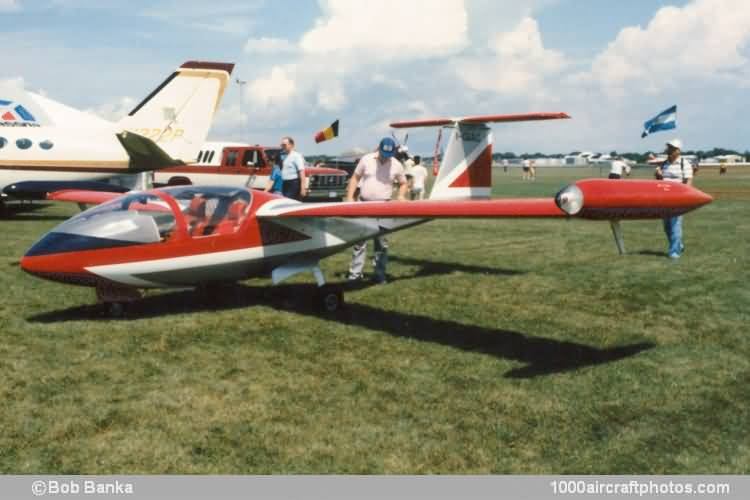Intended primarily for student pilot screening, basic and proficiency training, the C 22J was also suitable for ECM evaluation, ground and air navaid calibration, ecological survey and high-speed liaison. It could be converted easily for photographic survey duties, or for use as an RPV. The pictured first pre-production C 22J made its initial flight onFebruary 17, 1983, and differed from the prototype in having shorter span wings, with tip tanks, and 286.6 lb (130 kg) st TRS 18-083 engines.
Agusta acquired a 100% holding in Caproni Vizzola in 1983, at the time certification of the C 22J under FAR Part 23 (Utility and Aerobatic categories) was expected. In May 1985, a third arcraft was registered as I-CAVT (c/n 003). By 1988, when the certification was finally obtained from the RAI (Italian FAA), the FAA certification was still under way, pending a few unresolved hurdles such as noise limits.
The C 22J program was canceled in 1988 as Agusta considered the (Agusta division's) SIAI Marchetti S-211 more suitable for the jet training market, and subsequently the C 22Js were indefinitely grounded. The first, I-CAVJ, is preserved at the Museo dell'Aeronautica Gianni Caproni at Trento, Italy, the third, I-CAVT (the last aircraft ever produced by Caproni Vizzola), is preserved at the Museo Volandia at Milan. The type was also known by the unofficial name Caproncino, and in 1986 was also listed as the Ventura."
The following data relate to the pre-production C22J.
Span: 30 ft 2.25 in (9.20 m)
Length: 20 ft 6.5 in (6.26 m)
Height: 6 ft 2 in (1.88 m)
Wing area: 82.35 sq.ft (7.65 sq.m)
Weight empty: 1,627 lb (738 kg)
Loaded weight: 2,767 lb (1,255 kg)
Max speed: 345 mph (556 kmh)
Cruise speed: 202 mph (324 kmh)
Climb: to 16,400 ft (5,000 m) 10 min
Service ceiling: 25,000 ft (7,620 m)
Range: 805 mls (1,296 km)
